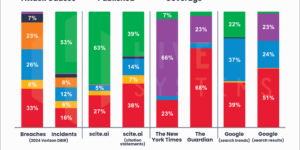La Nina will probably stick around for at least several more months, potentially leading to more hurricanes and tropical storms across the Atlantic during the heart of the season.
There’s now a 62 percent chance of cool waters across the equatorial Pacific Ocean from August through October, according to the U.S. Climate Prediction Center. Last month the agency estimated a 54 percent chance of La Nina for the same period.
La Nina in the Pacific typically cuts down on the amount of wind shear across the western Atlantic, which can let tropical storms and hurricanes grow stronger. Shear, when winds at different altitudes blow in varying directions or speed, can tear at the structure of a tropical system weakening it or completely destroying it.
Hurricanes in the Atlantic are closely watched by energy and agriculture markets because of their potential impact on orange juice production in Florida and natural gas and oil extraction and refining in the Gulf Coast region.
La Nina in the winter can also disrupt storm patterns across the U.S. leaving California drier, increasing the chances the years long drought there will continue. It can also lead to parched conditions across crop growing areas of Brazil and Argentina.
If La Nina lasts into the Northern Hemisphere’s winter it will be the third straight year the phenomenon has occurred. Three-year La Ninas have only occurred two other times since 1950.
Photo: In this satellite image provided by the National Aeronatics and Space Administration (NASA) and European Space Agency (ESA), Hurricane Florence churns through the Atlantic Ocean toward the U.S. East Coast on September 12, 2018. (ESA/NASA via Getty Images)





















 CCC Intelligent Solutions Acquires EvolutionIQ for $730M
CCC Intelligent Solutions Acquires EvolutionIQ for $730M  Surviving the ‘Silver Tsunami’: Closing the Talent, Skills Gap in Underwriting
Surviving the ‘Silver Tsunami’: Closing the Talent, Skills Gap in Underwriting  Most Distracting Holiday Songs for Drivers Ranked
Most Distracting Holiday Songs for Drivers Ranked  Auto Insurer Files $450M Fraud RICO Case in NY
Auto Insurer Files $450M Fraud RICO Case in NY 


